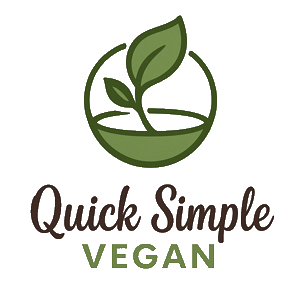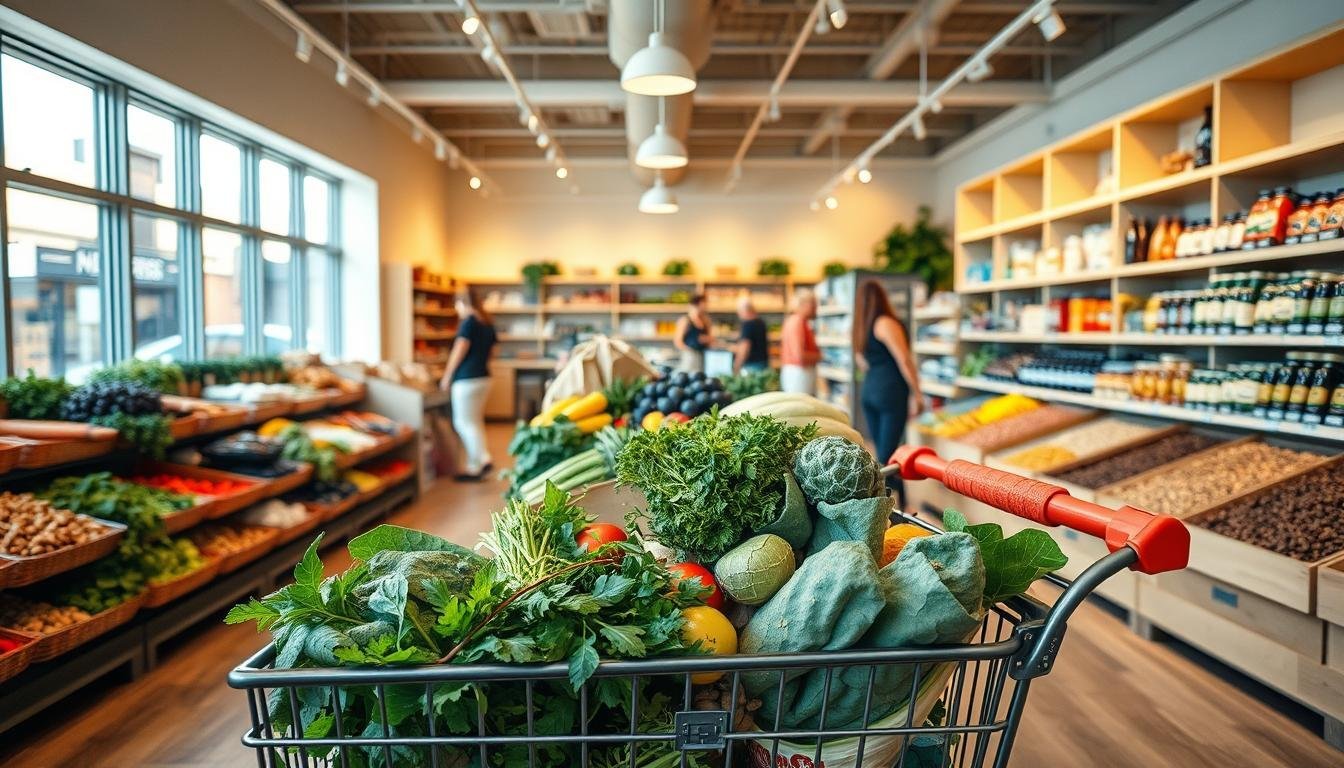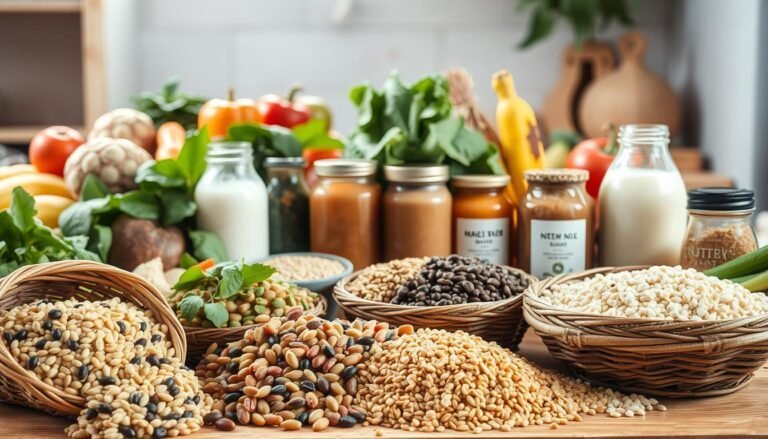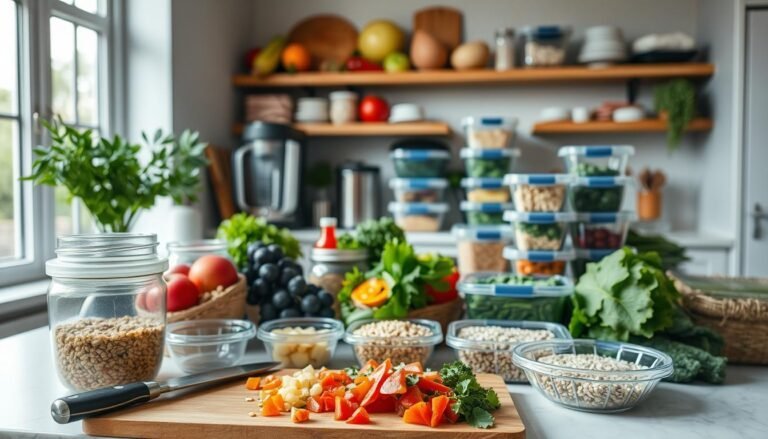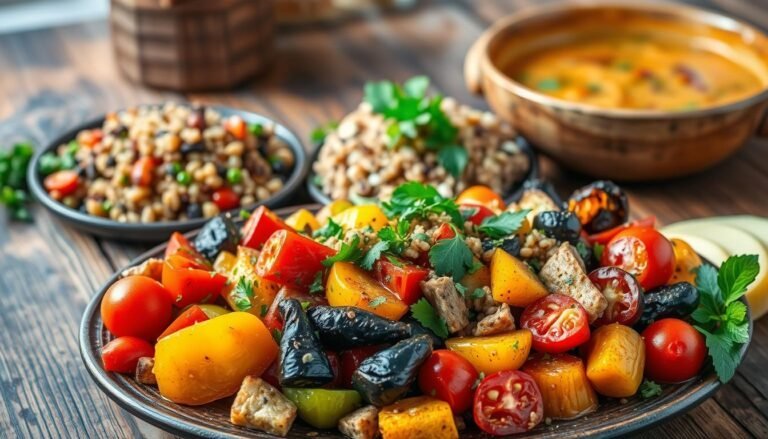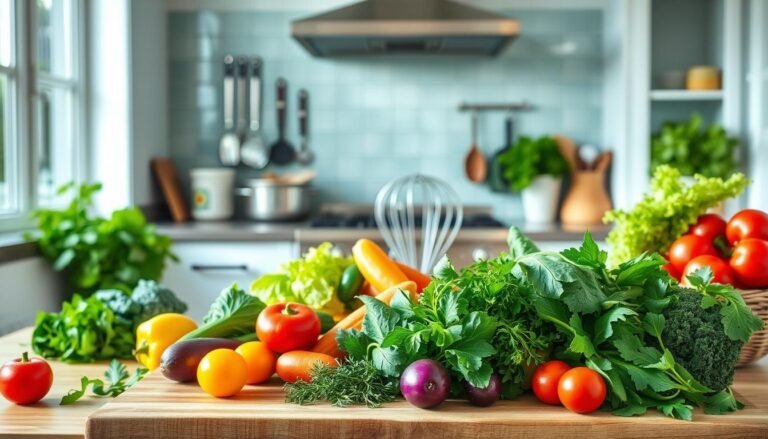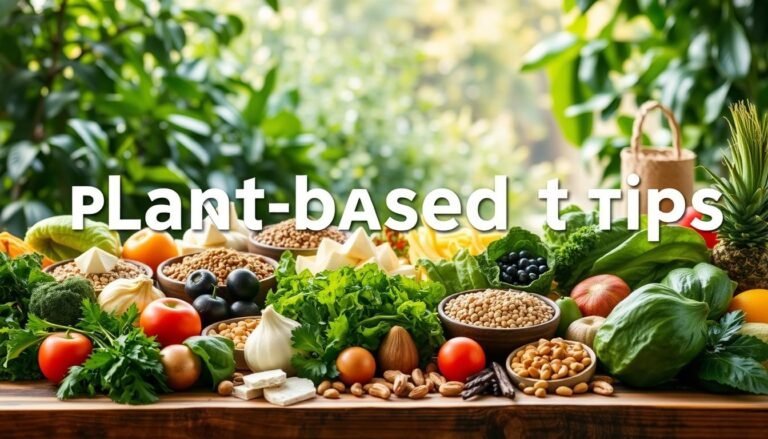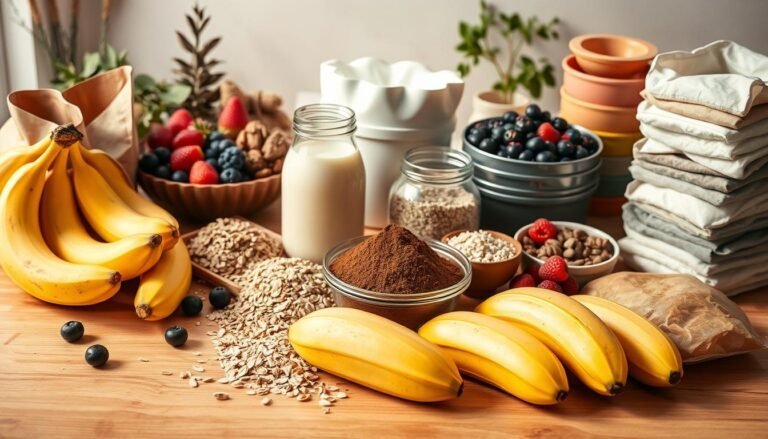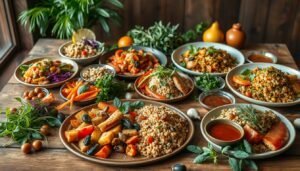Disclosure: This Post Contains Affiliate Links; We earn a commission on purchases.
Having a well-organized vegan pantry is key for a smooth switch to plant-based eating. With plant-based eating on the rise, knowing how to pick the right ingredients is vital.
Choosing top vegan ingredients means picking a mix of grains, legumes, nuts, and seeds. For more tips on stocking your vegan pantry, check out our collection of vegan pantry staple recipes that are all oil-free.
Key Takeaways
- Learn the basics of vegan cooking tips to make your plant-based meals better.
- Try different plant-based eating options to add variety to your diet.
- Discover smart vegan grocery shopping ways to fill your pantry.
- Find out the must-have ingredients for a fully stocked vegan pantry.
- Get ideas for adding vegan ingredients to your everyday meals.
Understanding Vegan Ingredients Basics
To get good at vegan cooking, you need to know what makes an ingredient vegan. Vegan ingredients come from plants and don’t have any animal products. This makes them perfect for ethical ingredients and healthy vegan recipes.
What Makes an Ingredient Vegan?
An ingredient is vegan if it’s from a plant. This means fruits, veggies, grains, and legumes. Nutritional yeast is a favorite vegan ingredient because it tastes cheesy and is good for you.
Benefits of Plant-Based Ingredients
Plant-based ingredients are good for the planet and your health. Using organic vegan products in your cooking can make your meals healthier.
Common Misconceptions About Vegan Food
Some people think vegan food is boring or limited. But with the right vegan cooking tips, you can make tasty and varied dishes. Trying out different cuisines and ingredients can show you how rich vegan food can be.
Essential Plant-Based Protein Sources
Plant-based protein sources are diverse and offer many health benefits. A well-planned vegan diet with these sources can meet all protein needs for good health.
Legumes and Beans
Legumes and beans are very high in protein. They also have lots of fiber, vitamins, and minerals. You can add lentils, chickpeas, black beans, and kidney beans to your meals easily. Try them in soups, stews, or salads.
Tofu, Tempeh, and Seitan
Tofu, tempeh, and seitan are soy-based and full of protein. Tofu is versatile and can be used in many dishes, like stir-fries and desserts. Tempeh has a nutty taste and is perfect in salads or as a meat substitute. Seitan, made from wheat gluten, has a meat-like texture and is very protein-rich.
Nuts and Seeds
Nuts and seeds are also great for protein. Almonds, chia seeds, hemp seeds, and pumpkin seeds are high in protein. You can add them to meals or snacks to increase your protein.
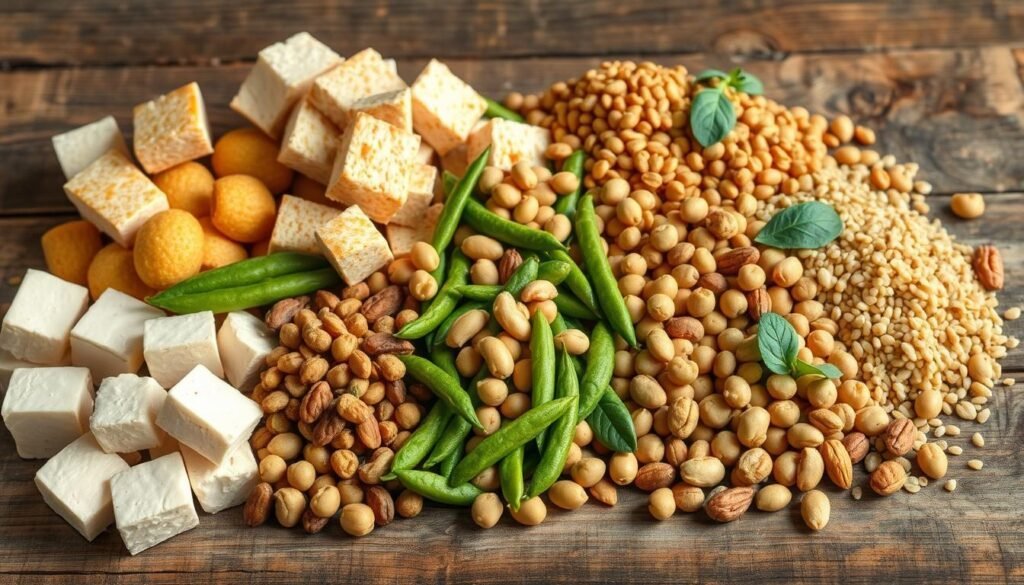
Nutritional Considerations for Protein Adequacy
To ensure enough protein in a vegan diet, eat a variety of protein sources. It’s also key to think about complementary proteins. This means combining different plant-based foods to get all essential amino acids.
Tips for Choosing the Best Vegan Ingredients for Dairy Alternatives
Finding the right dairy alternatives is key for a vegan lifestyle. With more people choosing plant-based diets, there’s a wide range of options. These options meet different tastes and dietary needs.
Plant-Based Milks
Plant-based milks are a must-have in vegan kitchens. You can find almond milk, soy milk, and oat milk. They’re great for drinking, cooking, or baking.
When picking a plant-based milk, think about its nutrition, taste, and how it affects the environment.
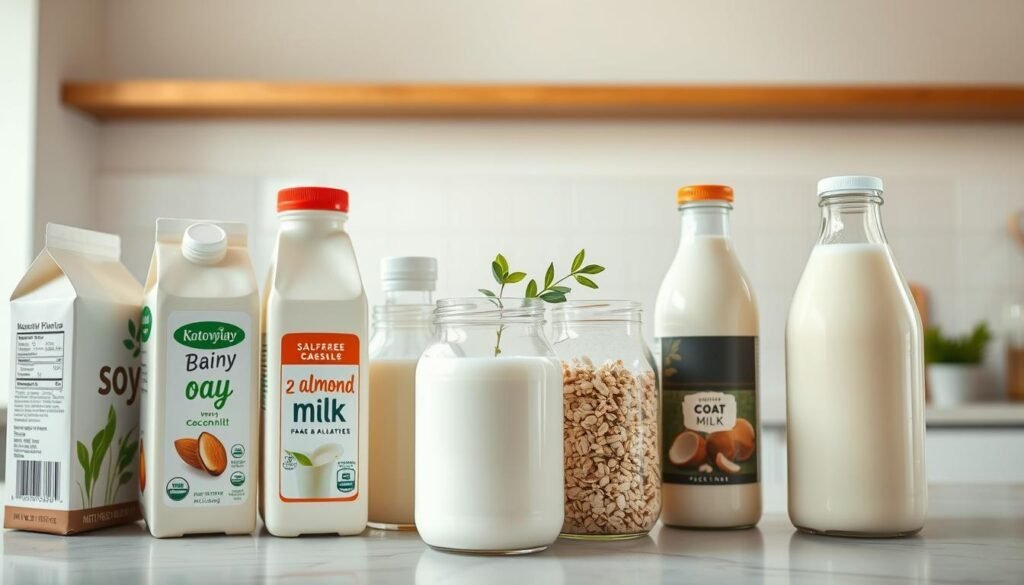
Vegan Cheeses
Vegan cheeses have come a long way. They now come in many textures and flavors, just like dairy cheeses. You can find soft brie to hard cheddar, making it easier to go dairy-free.
Butter and Cream Substitutes
For baking and cooking, you need butter and cream substitutes. Vegan versions, like those made from coconut oil and almond milk, add richness and texture. They’re perfect for recipes without dairy.
Yogurt and Dessert Alternatives
Vegan yogurt and dessert alternatives have also improved a lot. They’re made from soy, coconut milk, or almond milk. These offer creamy textures and tasty flavors, great for snacks or desserts.
Exploring these dairy alternatives makes it easy to enjoy a varied vegan diet. It helps in smoothly transitioning to a plant-based lifestyle.
Reading Labels and Avoiding Hidden Animal Products
To follow a vegan lifestyle, it’s key to understand food labels. Many foods have hidden animal products. So, knowing how to read labels is very important for vegans.
Common Non-Vegan Ingredients to Watch For
Vegans need to watch out for certain ingredients in foods. These include:
- Gelatin, made from animal bones and connective tissue
- Honey, an animal by-product
- Lactic acid, which can come from animal milk
- Casein, a milk protein
- Whey, a by-product of cheese making
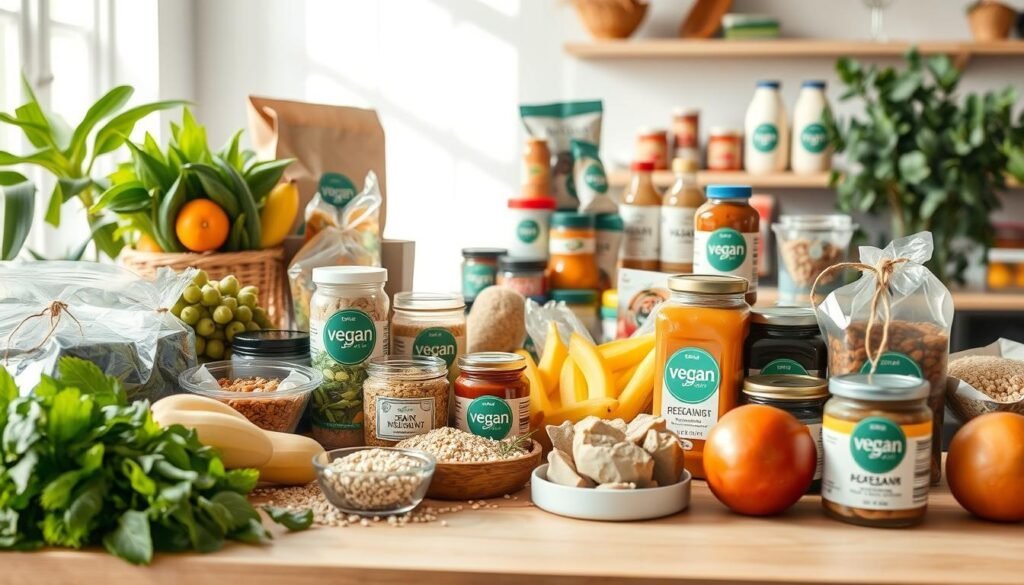
Understanding Food Certifications
Certifications like “Vegan Society” or “Plant-Based” help. They show a product is animal-free. But, always check the ingredients list. Certifications aren’t the same everywhere.
Apps and Resources for Vegan Shopping
Apps and websites help with vegan shopping. They list vegan products and check for animal ingredients. Some top picks are:
- Vegan scanner apps that check products against a database of vegan and non-vegan ingredients
- Websites with vegan product reviews and tips
These tools make vegan shopping easier. They help you find the right products and avoid animal products.
Budget-Friendly and Sustainable Vegan Shopping
Living vegan can be budget-friendly and sustainable with smart shopping. You can try many plant-based foods and help the planet at the same time.
Seasonal and Local Produce Tips
Buying seasonal and local produce saves money and is better for the planet. In-season fruits and veggies are cheaper and taste better. Visit your local farmer’s market or join a CSA to get fresh, local food.
Bulk Buying Strategies
Buying nuts, grains, and dried fruits in bulk saves money and reduces waste. Look for stores with bulk bins. Buying with friends or family can also cut costs.
Organic vs. Conventional Considerations
While organic produce is good, it’s not always cheap. Buy conventional for items not on the “Dirty Dozen” list. Save organic for items that might have more pesticides.
Reducing Food Waste and Packaging
It’s key to reduce food waste and packaging for sustainable vegan shopping. Plan meals, use leftovers, and pick products with little or biodegradable packaging. This helps the environment a lot.
Using these tips, you can live a budget-friendly and sustainable vegan life. It’s good for your wallet and the planet.
Conclusion
Understanding vegan basics is key. It helps us choose the right plant-based foods. This makes our diet balanced and fulfilling.
Always check labels to avoid animal products. Buying smart and saving money makes vegan living better. For more tips, check out Grabenord’s Guide to Vegan Grocery Shopping.
Using these tips, we can help the planet. And we can feel better too.
FAQ
What are the best plant-based protein sources for a vegan diet?
How do I choose the best vegan dairy alternatives?
What are some common non-vegan ingredients to watch out for when reading labels?
How can I make vegan shopping more budget-friendly and sustainable?
What are some tips for incorporating more organic vegan products into my diet?
How can I ensure I’m getting enough protein on a vegan diet?
What are some healthy vegan recipes that incorporate essential plant-based protein sources?

Focused on simplicity and flavor, Ryan helps readers create quick vegan meals and snacks without the overwhelm. Whether you’re new to vegan cooking or just want to keep it simple, Ryan’s tips, guides, and no-fuss approach make plant-based eating accessible and enjoyable for everyone.
Subscribe to Our Newsletter
